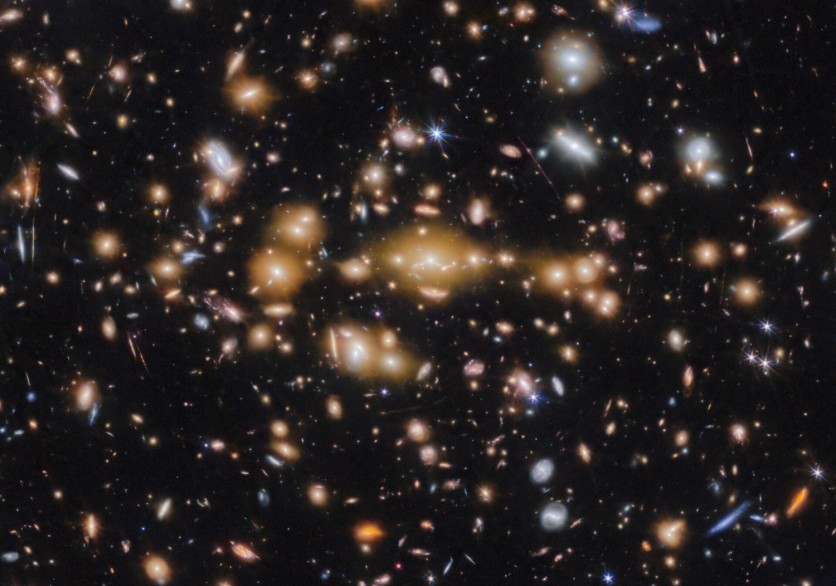NASA/ESA's James Webb Space Telescope has captured star clusters within the Cosmic Gems arc that provide a glimpse into early galaxy formation in the distant universe. Using Webb, an international group of astronomers has found five young massive star clusters in this arc, also known as SPT0615-JD1.
The Cosmic Gems arc is a strongly-lensed galaxy emitting light when the universe was approximately 460 million years old, looking back throughout 97 percent of cosmic time.

James Webb Space Telescope Captures the Cosmic Gems Arc
The Cosmic Gems arc was first found through images from the Hubble Space Telescope's RELICS program, which focused on gravitational lensing by the galaxy cluster SPT-CL J0615-5746.
According to ESA, this arc stands out due to gravitational lensing, which can resolve the galaxy down to parsec scales. Lead author Angela Adamo of Stockholm University and the Oskar Klein Centre in Sweden highlighted the significance of this discovery in understanding the universe's early stages.
She noted that the galaxy in the Cosmic Gems arc likely played a pivotal role in the universe's reionization - a critical phase when intense radiation began to reshape the cosmos.
The James Webb Space Telescope used its exceptional sensitivity and angular resolution in near-infrared wavelengths to examine these clusters. These capabilities, combined with the gravitational lensing provided by the foreground galaxy cluster, enabled astronomers to identify and study these distant star clusters in unprecedented detail.
Leading the Webb observing program, Larry Bradley underscored this discovery's uniqueness, noting that no other telescope could have provided such profound insights into the early stages of star formation in galaxies at such vast distances.
The clusters identified within the Cosmic Gems arc are notable for their density and concentration within a small region of their host galaxy. Unlike the ancient globular clusters found in our Milky Way, these clusters are young and massive and contribute significantly to the ultraviolet light emissions from their galaxy.
Adamo expressed her astonishment upon first viewing the Webb images, describing the clusters as bright dots forming a mirrored chain across the galaxy.
The Formation of Globular Clusters
ESA noted that this observation provides clues about the conditions that may lead to the formation of globular clusters - a longstanding mystery in astrophysics.
The discovery of these massive young star clusters has broader implications for understanding galaxy evolution. It suggests proto-globular clusters, precursors to the ancient clusters observed in the Milky Way, may have formed within faint galaxies during the reionization era.
The team anticipates further observations and spectroscopic studies using Webb's NIRSpec and MIRI instruments. These future observations aim to confirm the galaxy's redshift, study the physical properties of the star clusters in greater detail, and investigate the properties of ionized gas associated with active star formation regions.
"The surprise and astonishment was incredible when we opened the Webb images for the first time," Adamo said in a statement. "We saw a little chain of bright dots, mirrored from one side to the other - these cosmic gems are star clusters! Without Webb we would not have known we were looking at star clusters in such a young galaxy!"
The findings of the study were published in the journal Nature.
Related Article : NASA's James Webb Space Telescope Provides New Insights Into Origins of the Crab Nebula

ⓒ 2025 TECHTIMES.com All rights reserved. Do not reproduce without permission.




